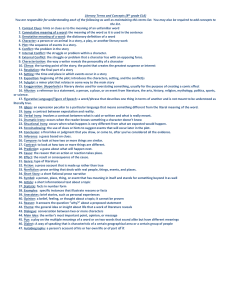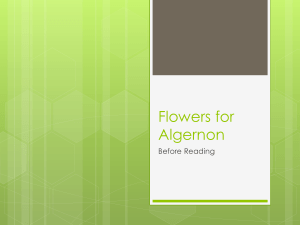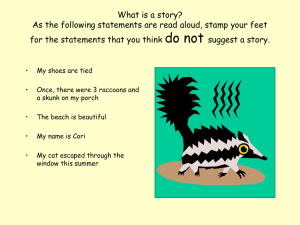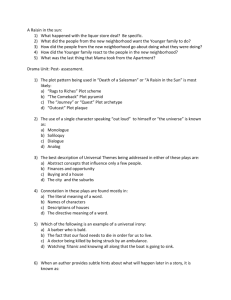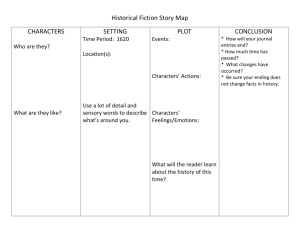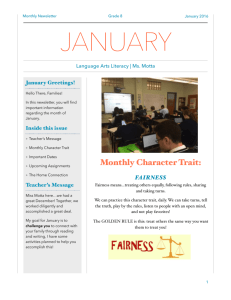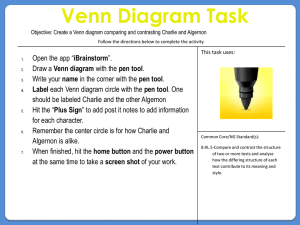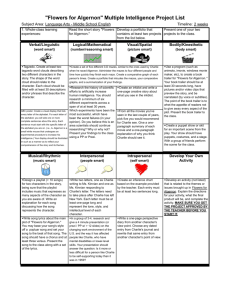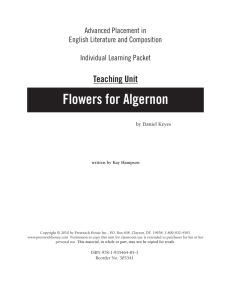Post-It Note Activity (Literary & Reading Skills Terms #s 1-35)
advertisement
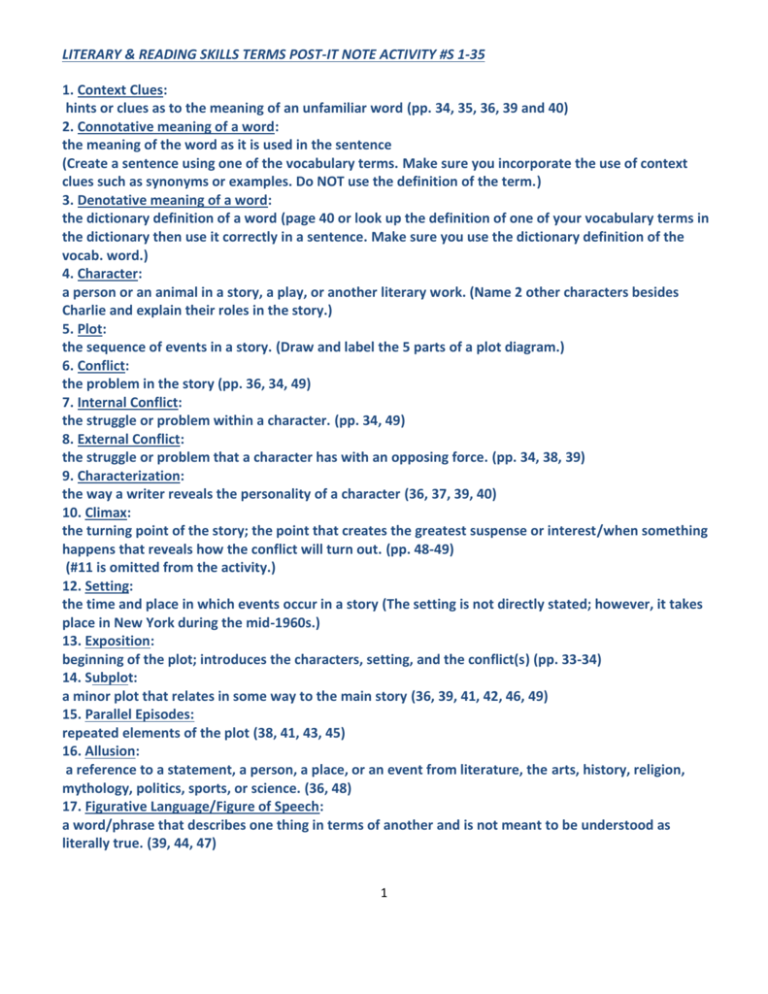
LITERARY & READING SKILLS TERMS POST-IT NOTE ACTIVITY #S 1-35 1. Context Clues: hints or clues as to the meaning of an unfamiliar word (pp. 34, 35, 36, 39 and 40) 2. Connotative meaning of a word: the meaning of the word as it is used in the sentence (Create a sentence using one of the vocabulary terms. Make sure you incorporate the use of context clues such as synonyms or examples. Do NOT use the definition of the term.) 3. Denotative meaning of a word: the dictionary definition of a word (page 40 or look up the definition of one of your vocabulary terms in the dictionary then use it correctly in a sentence. Make sure you use the dictionary definition of the vocab. word.) 4. Character: a person or an animal in a story, a play, or another literary work. (Name 2 other characters besides Charlie and explain their roles in the story.) 5. Plot: the sequence of events in a story. (Draw and label the 5 parts of a plot diagram.) 6. Conflict: the problem in the story (pp. 36, 34, 49) 7. Internal Conflict: the struggle or problem within a character. (pp. 34, 49) 8. External Conflict: the struggle or problem that a character has with an opposing force. (pp. 34, 38, 39) 9. Characterization: the way a writer reveals the personality of a character (36, 37, 39, 40) 10. Climax: the turning point of the story; the point that creates the greatest suspense or interest/when something happens that reveals how the conflict will turn out. (pp. 48-49) (#11 is omitted from the activity.) 12. Setting: the time and place in which events occur in a story (The setting is not directly stated; however, it takes place in New York during the mid-1960s.) 13. Exposition: beginning of the plot; introduces the characters, setting, and the conflict(s) (pp. 33-34) 14. Subplot: a minor plot that relates in some way to the main story (36, 39, 41, 42, 46, 49) 15. Parallel Episodes: repeated elements of the plot (38, 41, 43, 45) 16. Allusion: a reference to a statement, a person, a place, or an event from literature, the arts, history, religion, mythology, politics, sports, or science. (36, 48) 17. Figurative Language/Figure of Speech: a word/phrase that describes one thing in terms of another and is not meant to be understood as literally true. (39, 44, 47) 1 18. Idiom: an expression peculiar to a particular language that means something different from the literal meaning of the word. (44, 46) 19. Irony: a contrast between expectation and reality. (Select verbal or situational irony and create an example.) 20. Verbal Irony: involves a contrast between what is said or written and what is really meant. (pg. 865) 21. Dramatic Irony: occurs when the reader knows something a character doesn’t know (pg. 39 March 25; pg. 40) 22. Situational Irony: occurs when what happens is very different from what we expected would happen. (pp. 48 & 49) 23. Foreshadowing: the use of clues or hints to suggest events that will occur later in the plot. (pp. 37, 48) 24. Conclusion: a final idea/judgment that you draw, or come to, after you’ve considered all the evidence. (pg. 34) 25. Inference: a guess based on clues. (pp. 36, 42, 46) 26. Compare: to look at how two or more things are similar. (pg. 39 Progress Report 8; pg. 41 Robinson Crusoe) 27. Contrast: to look at how two or more things are different. (How do the times Charlie has raced Algernon differ? How did Charlie respond after the first time he raced Algernon? the second? the third?) 28. Prediction: a guess about what will happen next. (See “Foreshadowing” pp. 37, 48) 29. Cause: the reason that an action or reaction takes place. (pg. 42) 30. Effect: the result or consequence of the cause. (pg. 42) 31. Genre: type of literature (Which main genre and subgenre does “Flowers for Algernon” represent?) 32. Fiction: a prose account that is made up rather than true (Explain how “Flowers…” represents fiction.) 33. Nonfiction: prose writing that deals with real people, things, events, and places. (pg. 68 Read the passage and explain how it represents Nonfiction.) 34. Short Story: a short fictional prose narrative (Write the definition and the title “Flowers for Algernon.”) 35. Science Fiction: prose writing that takes place in the future and/or contains some created technological advances (Explain how “Flowers for Algernon” represents science fiction.) In each Literary/Reading Skills Terms box on the Post-It Note Activity sheet, you MUST include the following: 1. the definition of the term 2. an example from the story (if the page number is provided) 2 3. an explanation of how the example represents the term **Some terms have specific content for their boxes; therefore, check out the information in parenthesis for these terms. On each Post-It Note, you will write the term and place the Post-It Note directly on top of the appropriate box. 3
